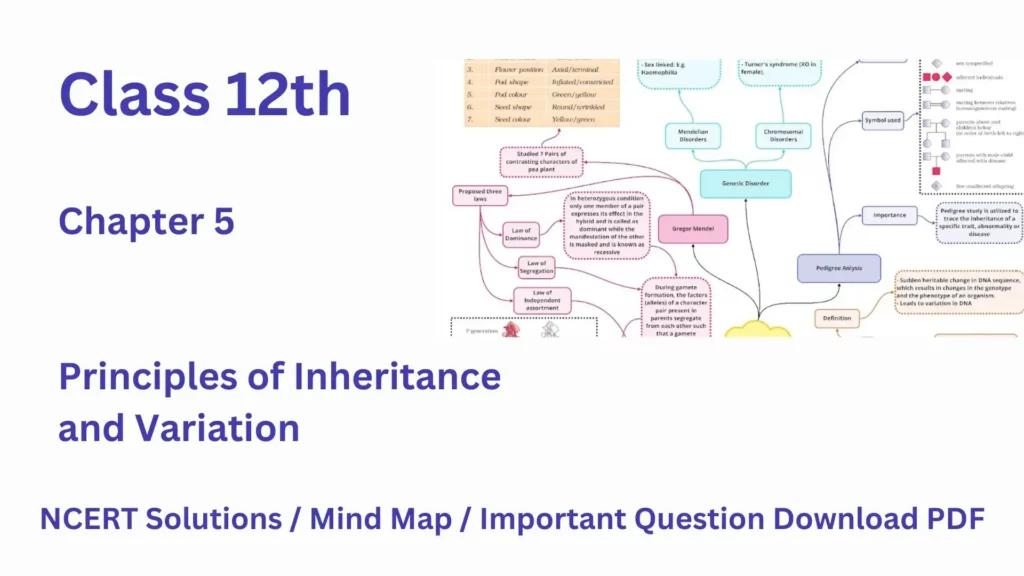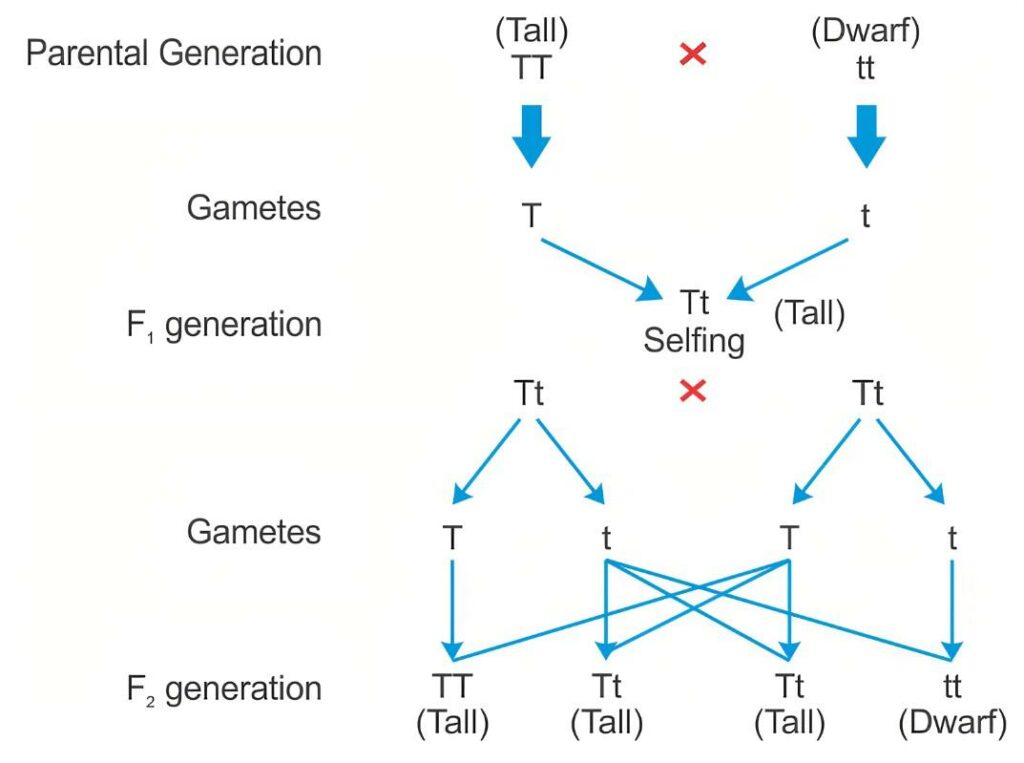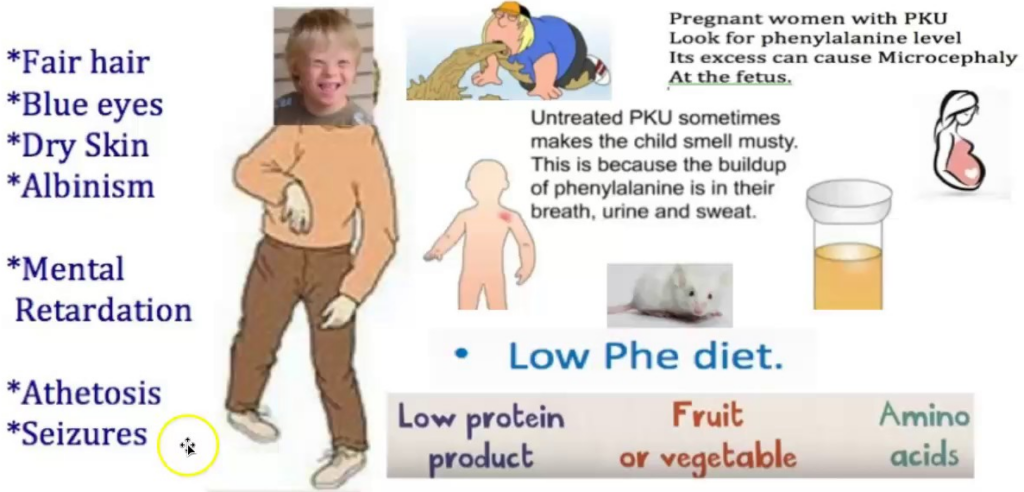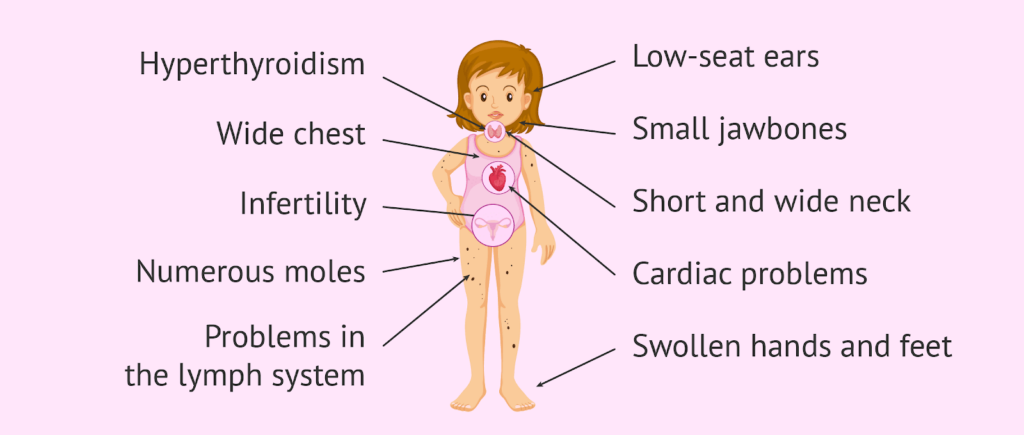NCERT Solutions, Question Answers and Mind Map for Class 12 Biology Chapter 5, “Principles of Inheritance and Variation,” is a comprehensive study material package designed to help students understand the principles of inheritance and variation.
NCERT Solutions provide a detailed explanation and answers to the questions presented in the chapter. The chapter in Solution covers all the topics including Mendelian inheritance, divergence from Mendelian inheritance, sex determination and genetic disorders. They also provide tips on how to answer different types of questions, including short answer, long answer and multiple choice questions.

The question-and-answer section of the chapter covers a wide range of topics, from principles of inheritance and variation to the genetic basis of evolution. It also includes questions on different types of genetic disorders like sickle cell anaemia and thalassemia and their causes and symptoms.
The mind map provides a visual representation of the major topics covered in the chapter, helping students to understand the relationships between different concepts and ideas. The mind map covers the different types of inheritance, genetic disorders, and the role of genetic variation in development.
Overall, the NCERT Solutions, Question Answers and Mind Maps for Class 12 Biology Chapter 5 provide a comprehensive understanding of the principles of inheritance and variation and equip students with the necessary knowledge and skills to answer questions related to the subject.
NCERT Solution Class 12 Biology Chapter 5 Principles of Inheritance and Variation
Introduction: Genetics is the study of principles and mechanisms of heredity and variation. Gregor Johann Mendel is known as ‘father of Genetics’. important attributes to the reproductive health of a society.
Inheritance:
Inheritance is the process by which characters are passed on from parent to progeny. It is the basis of heredity.
Variation:
Variation is the degree by which progeny differ from their parents. Variation may be in terms of morphology, physiology, cytology and behavioristic traits of individual belonging to same species.
Variation arise due to:
- Reshuffling of gene/ chromosomes.
- Crossing over or recombination
- Mutation and effect of environment.
Inheritance of one gene (Monohybrid cross):
Mendel crossed tall and dwarf pea plant and collected all the seeds obtained from this cross. He grew all the seeds to generate plants of first hybrid generation called F1 generation. He observed that all the plants are tall. Similar observation was also found in other pair of traits.
Mendel self-pollinated the F1 plants and found that in F2 generation some plants are also dwarf. The proportion of dwarf plants is 1/4th and tall plants of 3/4th.

- Mendel called the ‘factors’ that passes through gametes from one generation to next generation. Now a day it is called as genes (unit of inheritance).
- Genes that code for a pair of contrasting traits are known as alleles.
- Alphabetical symbols are used to represent each gene, capital letter (TT) for gene expressed in F1 generation and small letter (tt) for other gene.
- Mendel also proposed that in true breeding tall and dwarf variety allelic pair of genes for height is homozygous (TT or tt). TT, Tt or tt are called genotype and tall and dwarf are called phenotype.
- The hybrids which contain alleles which express contrasting traits are called heterozygous (Tt).
- The monohybrid ratio of F2 hybrid is 3 : 1 (phenotypic) and 1 : 2 : 1 (genotypic).
Dominance: When a factor (allele) expresses itself in the presence or absence of its dominant factor called dominance. It forms a complete functional enzyme that perfectly express it.
Recessive: It can only express itself in the absence of or its recessive factor allele. It forms a incomplete defective enzyme which fails to express itself when present with its dominant allele, i.e., in heterozygous condition.
Test cross:
Test cross is the cross between an individual with dominant trait and a recessive organism in order to know whether the dominant trait is homozygous or heterozygous.

Mendel’s Experiment:
Gregor Mendel, after performing his experiments on pea plants, discovered the fundamental laws of inheritance. He proposed three laws of inheritance which we are studying to date. He has chosen pea plants having seven opposite traits of particular characters and conducted his experiment on 14 true-breeding pea plant varieties.
Mendel’s Laws:
There were 3 laws that were proposed by Mendel
Law of Dominance: It is explained in this law that all of the traits, or the characters are controlled by the unit called the factors. These factors are found to be in pairs and are called alleles. If they occur in the same pair they are called homozygous, they can be either dominant or recessive and if the alleles occur in a different pair then it is called heterozygous, It will always be dominant. “For example Allele for tallness is dominant over the allele for dwarfism”.
Law of Segregation of Genes: Law of segregation is based on the fact that alleles do not show any blending and that both the characters are recovered as such in the second filial generation though one of these is not seen in the first generation. The segregation of factors or a pair of alleles occurs in such a manner that the gamete receives only one of the two factors from each other. Examples of the law of segregation of alleles. In this R is dominant over r.
Law of Independent Assortment: It states that pairs of traits in the parental generation sort independently from one another when passing from one generation to the next. It is explained with the help of a dihybrid cross.
Inheritance of Two Genes (Dihybrid Cross):
The inheritance of two genes requires two characters of the same trait. This can be observed with the help of a dihybrid cross. Mendel has chosen two traits that involve the color and the shape of the seed to explain the inheritance of two genes. Y represents the dominant yellow color seed color, y represents a recessive green color while R represents the round shape of the seed, and r represents the wrinkled shape of the seed. The genotype of the parents can then be written as RRYY and rryy. The gametes RY and ry will unite after fertilization and will produce the F1 hybrid RrYy. The dihybrid cross is also useful in the study of the Law of Independent Assortment. After the self-pollination of the F1 hybrid, the F2 ratio was found to be 9 : 3 : 3 : 1.

Incomplete Dominance:
Incomplete dominance is a type of inheritance in which one allele for a specific trait is not completely dominant over the other allele i.e. neither allele is dominant over the other in heterozygous organisms. This results in a combined phenotype. Incomplete dominance is also called mosaic or partial dominance. Here new phenotypic characters are expressed entirely.
Mirabilis Jalapa, the marvel of Peru commonly called a 4 o’clock plant. It is a very good example of incomplete dominance because of its Inheritance of flower color. It is shown in the figure given below where red flowers (dominant) were crossed with white flowers (recessive), the F1 generation contains flowers that are pink in color (intermediate). The phenotypic and the genotypic ratio observed will be the same, that is 1 : 2 : 1.

Co-dominance:
It is the phenomenon of two alleles lacking dominance-recessive relationship and both expressing themselves in the organism.
Human beings, ABO blood grouping are controlled by gene I. The gene has three alleles IA, IB and i. Any person contains any two of three allele IA, IB are dominant over i.
The plasma membrane of the red blood cells has sugar polymers that protrude from its surface and the kind of sugar is controlled by the gene.
When IA and IB are present together, both express their own types of sugars because of co-dominance.
Difference between Incomplete Dominance and Co-Dominance:
| Incomplete Dominance | Co-Dominance |
| Effect of one of the two alleles is more conspicuous. | Effect of both the alleles are equally conspicuous. |
| It produces a mixture of the expression of two alleles. | There is no mixing of the effect of the two alleles. |
| The F1 does not resemble either of the parents. | The F1 resembles both the parents. |
| E.g.: Flower colour in dog flower. | E.g.: ABO blood grouping in humans, |

Multiple Allelism or Codominance:
The condition in which three or more alternative forms of alleles present for a single gene on the same chromosome is known as Multiple Allelism and the alleles are known as multiple alleles. For example, Multiple allelism is better understand with the help of the ABO blood group system in humans. The inheritance of the ABO blood group is a gene I (in which I represent isohemagglutinin) that remains in the 3 allelic expressions: IA, IB, and i which are codominant in humans. An individual can possess any two of these alleles. Gene IA is responsible for blood group A and codes for glycoprotein A while gene IB is responsible for blood group B and codes for glycoprotein B.
The gene ‘i’ does not produce any glycoprotein and so the person who will be having these two alleles together in a homozygous condition will have O group blood. The genes IA and IB are dominant over ‘i’ but alleles IA and IB are dominant equally and produce both the glycoproteins A and B simultaneously and results in the blood group AB. Such alleles are known as co-dominant alleles.
Chromosomal Theory of Inheritance:
- Chromosome as well as gene both occurs in pair. The two alleles of a gene pair are located on the same locus on homologous chromosomes.
- Sutton and Boveri argued that the pairing and separation of a pair of chromosomes would lead to segregation of a pair of factors (gene) they carried.
- Sutton united the knowledge of chromosomal segregation with mendelian principles and called it the chromosomal theory of inheritance.

Linkage and Recombination:
When two genes in a Dihybrid cross were situated on same chromosome, the proportion of parental gene combination was much higher than the non-parental type. Morgan attributed this due to the physical association or the linkage of the two genes and coined the linkage to describe the physical association of genes on same chromosome.
The generation of non-parental gene combination during Dihybrid cross is called recombination. When genes are located on same chromosome, they are tightly linked and show very low recombination.
Crossing over:
It leads to separation of linked genes, It involves exchange of segments between non-sister chromatics of homologous chromosomes. The frequency of crossing over can never exceed 50%. It increases variability by forming new gene combinations.
Sex Determination:
Sex determination is the process where the gender of the child can be revealed. Sex chromosomes are responsible for the determination of the sex of a child. In the case of humans, females have XX types of chromosomes while males have one X and one Y type of chromosomes. Thus, when the egg (female gamete) formed will be having identical X-chromosome each but male sperms (male gametes) are not identical as they have one X-chromosome and one Y-chromosome. So it’s a matter of chance that which sperm fuses with the egg (X or Y). Thus, the females are said to be homogametic (same type of chromosomes) while males are said to be heterogametic (different types of chromosomes).
In the case of insects, the mechanism of sex determination is of XO type. Here the eggs consist of the X chromosomes while the sperms may have one or none X chromosomes. Thus, the males are said to be homogametic (same type of chromosomes) while females are said to be heterogametic (different types of chromosomes).

Mutation: Mutation is a phenomenon which results in alternation of DNA sequence and consequently results in the change in the genotype and phenotype of an organism. The mutations that arise due to due to change in single base pair of DNA are called point mutation e.g., Sickle cell anaemia.
Pedigree Analysis: The analysis of traits in several of generation of a family is called the pedigree analysis. The inheritance of a particular trait is represented in family tree over several generations. It is used to trace the inheritance of particular trait, abnormality and disease.
Genetic Disorders: Broadly, genetic disorders may be grouped into two categories Mendelian disorders.
Chromosomal disorders: They are transmitted as the affected individual is sterile. This is always dominant in nature.
Mendelian disorder includes:
Haemophilia:
Sex linked recessive disease in which, in an infected individual, a minor cut leads to non-stop bleeding. Heterozygous female (carrier) can transmit the disease to their son. The possibility of a female becoming a haemophilic is extremely rare because mother of such a female has to be at least carrier and the father should be haemophilic (unviable in the later stage of life).

Sickle cell anaemia:
An autosome linked recessive trait in which mutant haemoglobin molecules undergo polymerization under low oxygen tension causing change in shape of the RBC from biconvex disc to elongated sickle like structure. The defect is caused by the substitution of Glutamic acid (Glu) by Valine (Val) at the sixth position of the beta globin chain of the haemoglobin molecule. The substitution of amino acid in the globin protein results due to the single base substitution at the sixth codon of the beta globin gene from GAG to GUG.


Phenylketonuria:
Inborn error of metabolism inherited as autosomal recessive trait. The affected individual lacks an enzyme that converts the amino acids phenylalanine to tyrosine. As a result of this phenylalanine is accumulated and converted into phenyl pyruvic acid and other derivatives that results into mental retardation.

Aneuploidy:
It is chromosomal disorder Failure of segregation of chromatids during cell division results in loss or gain of chromosome called aneuploidy.

Polyploidy:
The failure of cytokinesis leads to two sets of chromosome called polyploidy.

Down’s Syndrome:
Down’s Syndrome is due to presence of additional copy of the chromosome number 21. The affected individual is short statured with small, rounded head, furrowed tongue and partially opened mouth. Mental development is retarded.

Klineflener’s Syndrome:
Klineflener’s Syndrome due to presence of an additional copy of X-chromosome (XXY). Such persons have overall masculine development however, the feminine development (development of breast, i.e., Gynaecomastia) is also expressed. They are sterile.

Turner’s Syndrome:
Turner’s Syndrome caused due to the absence of one of the X chromosomes. 45 with XO, such females are sterile as ovaries are rudimentary. They lack secondary sexual characters.

NCERT Solution for Class 12 Biology Chapter wise
- Chapter 1 Reproduction in Organisms
- Chapter 2 Sexual Reproduction in Flowering Plants
- Chapter 3 Human Reproduction
- Chapter 4 Reproductive Health
- Chapter 5 Principles of Inheritance and Variation
- Chapter 6 Molecular Basis of Inheritance
- Chapter 7 Evolution
- Chapter 8 Human Health and Disease
- Chapter 9 Strategies for Enhancement in Food Production
- Chapter 10 Microbes in Human Welfare
- Chapter 11 Biotechnology: Principles And Processes
- Chapter 12 Biotechnology and its Applications
- Chapter 13 Organisms and Populations
- Chapter 14 Ecosystem
- Chapter 15 Biodiversity and Conservation
- Chapter 16 Environmental Issues
